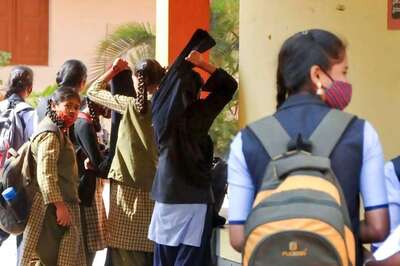
views
PARSI NEW YEAR 2023: Parsi New Year, also known as ‘Navroz’ or ‘Nowruz,’ is a traditional festival celebrated by the Parsi community, which follows the Zoroastrian faith. It marks the beginning of the Iranian calendar year and usually falls on the first day of the month of Farvardin. Navroz is observed with great enthusiasm by Parsis to celebrate new beginnings, growth, and renewal. This year, Parsi New Year (Navroz) is being celebrated today on August 16. However the date may vary depending on the sighting of the new moon.
WHY DO PARSIS HAVE 2 NEW YEAR?
Parsis have two New Year celebrations due to historical and cultural reasons that are connected to their migration and interaction with different societies. In 2023, the Parsi New Year will be celebrated on August 16, while the Gregorian New Year was celebrated on January 1.
- Zoroastrian Religious New Year (Navroz)This New Year, also known as “Jamshedi Navroz,” is based on the Zoroastrian calendar and is celebrated on the first day of the Iranian month of Farvardin. It has its origins in ancient Persia and is an important religious and cultural festival for Parsis. Navroz marks the vernal equinox and is a time of renewal, purification, and celebration of nature’s rebirth. It has been an integral part of Zoroastrian tradition for centuries and is observed with various customs and rituals.
- Shahenshahi New YearThe Shahenshahi calendar, also known as the “Kadmi” calendar, is a different calendar system used by Parsis. It is based on a later version of the Zoroastrian calendar and is observed by a smaller segment of the Parsi community. The Shahenshahi New Year is celebrated six months after Navroz, typically around August or September, depending on the specific calendar calculations.
HISTORY AND SIGNIFICANCE
The reason for having two New Year celebrations is connected to the Parsis’ historical migration from Persia (modern-day Iran) to India. When the Parsis migrated to India to escape religious persecution in Persia during the 7th to 10th centuries, they encountered differences in local calendar systems and interpretations of religious events.
Over time, these differences led to the adoption of two distinct New Year celebrations within the Parsi community.
The division between the two calendars and New Year celebrations is more than just a difference in dates. It represents the diverse historical and cultural experiences of the Parsi community as it adapted to its new home in India. Both Navroz and the Shahenshahi New Year hold significance for different segments of the Parsi population, and they are observed with their respective traditions, rituals, and festivities.




















Comments
0 comment